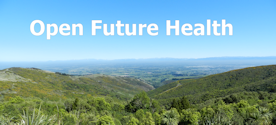Your Body Makes Ketones When it Burns Fat
Starvation Ketosis
There is a primitive form of ketosis caused by starvation. It's a protective form of metabolism, because in times past, food supply was never certain. Both feast and famine were common. Starvation ketosis, allows the brain of a malnourished person to remain efficient, and allows one to hunt for game, even though enough food to maintain weight is not available.
In times of starvation, or a low-carbohydrate intake resulting in low insulin levels, ketone bodies supply up to 50% of the energy requirements for most body tissues, and up to 70% of the energy required by the brain.
Scientific understanding of this form of metabolism, was first described in the 1920s.
Fasting and other haphazard dietary regimens (and superstitious beliefs) have been used to treat epilepsy since at least 500 BC. People who were epileptic, didn't have their seizures if they were kept on short rations.
The first real science arose in the early 1900s, when several medical men, I'm not sure the term doctor is appropriate, reported success in treating epilepsy with a diet, or with fasting. The "water diet" was supposed to be very successful. This principle was taken up seriously at John Hopkins, and the Mayo Clinic. Successful trials were conducted.
It was in 1921 that endocrinologist Rollin Woodyatt noted that three water-soluble compounds, acetone, ß-hydroxybutyrate and acetoacetate (together called ketone bodies) were produced by the liver as a result of starvation, or if they followed a diet rich in fat and low in carbohydrates. Russel Wilder from the Mayo Clinic called this the "ketogenic diet" and used it as a treatment for epilepsy, also in 1921. There was also research at John Hopkins Hospital.
Nutritional Ketosis
In our modern understanding, ![]() nutritional ketosis is a natural process, the result of carbohydrate restriction, which metabolizes
nutritional ketosis is a natural process, the result of carbohydrate restriction, which metabolizes ![]() fatty-acids in the liver to make ketones, that become the main energy source for your muscles and for your brain.
fatty-acids in the liver to make ketones, that become the main energy source for your muscles and for your brain.
Your body can adapt to burning fat and using ketones very well, processing different types of nutrients into the fuels that ![]() it needs for metabolism. Proteins, fats, and carbohydrates can all be processed to produce energy. Eating a low-carbohydrate high-fat diet initiates your ketosis metabolism, which is a normal and safe bio-chemical reaction.
it needs for metabolism. Proteins, fats, and carbohydrates can all be processed to produce energy. Eating a low-carbohydrate high-fat diet initiates your ketosis metabolism, which is a normal and safe bio-chemical reaction.
Ketone Bodies
There are three ketone bodies present in the human blood stream when the metabolic process of ketosis is dominant:
Acetoacetate (AcAc) is created first.
ß-hydroxybutyrate (BHB) is created from acetoacetate.
Acetone is a spontaneously created side product of acetoacetate.
During fasting or low carbohydrate intake, levels of ketone bodies in the blood stream can rise to levels between 0.5mM and 3 mM, depending on the amount of protein and carbohydrates consumed. This state is called nutritional ketosis. An advanced degree of ketosis we might call therapeutic nutritional ketosis, requires strong carbohydrate restriction and careful control of protein intake. This is used by physicians in cancer control and epilepsy treatment.
